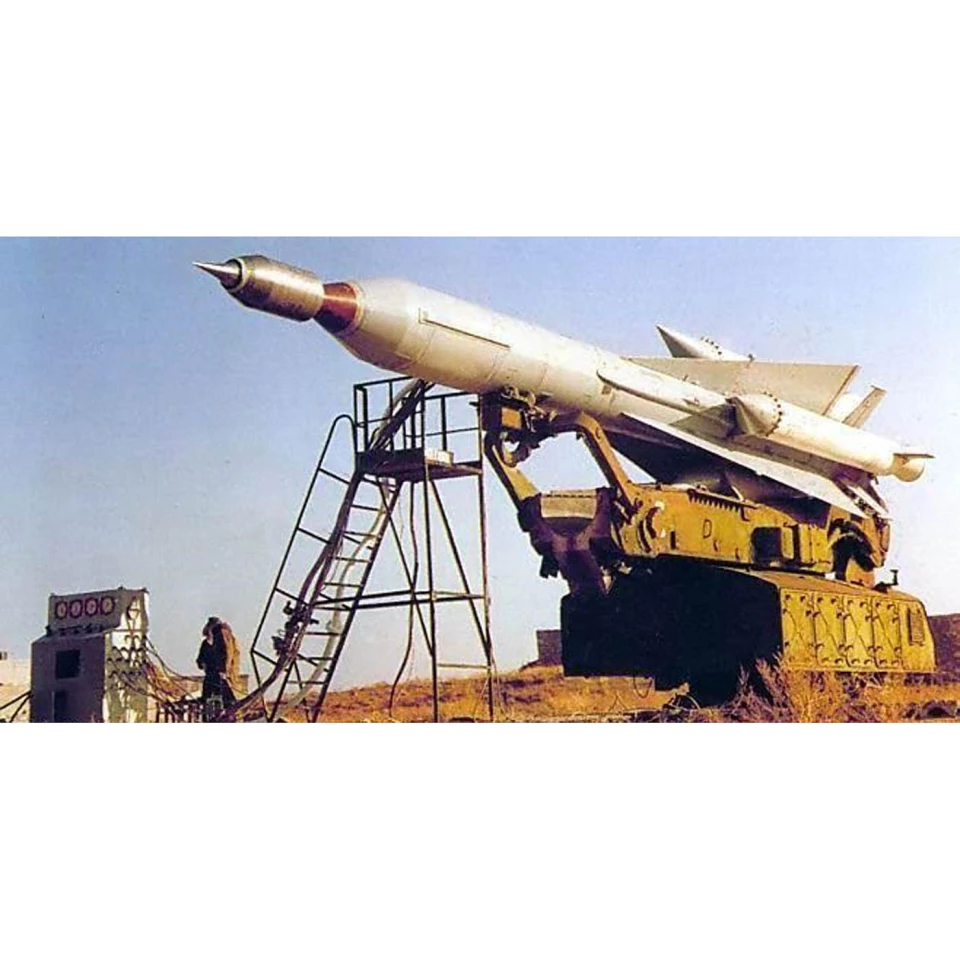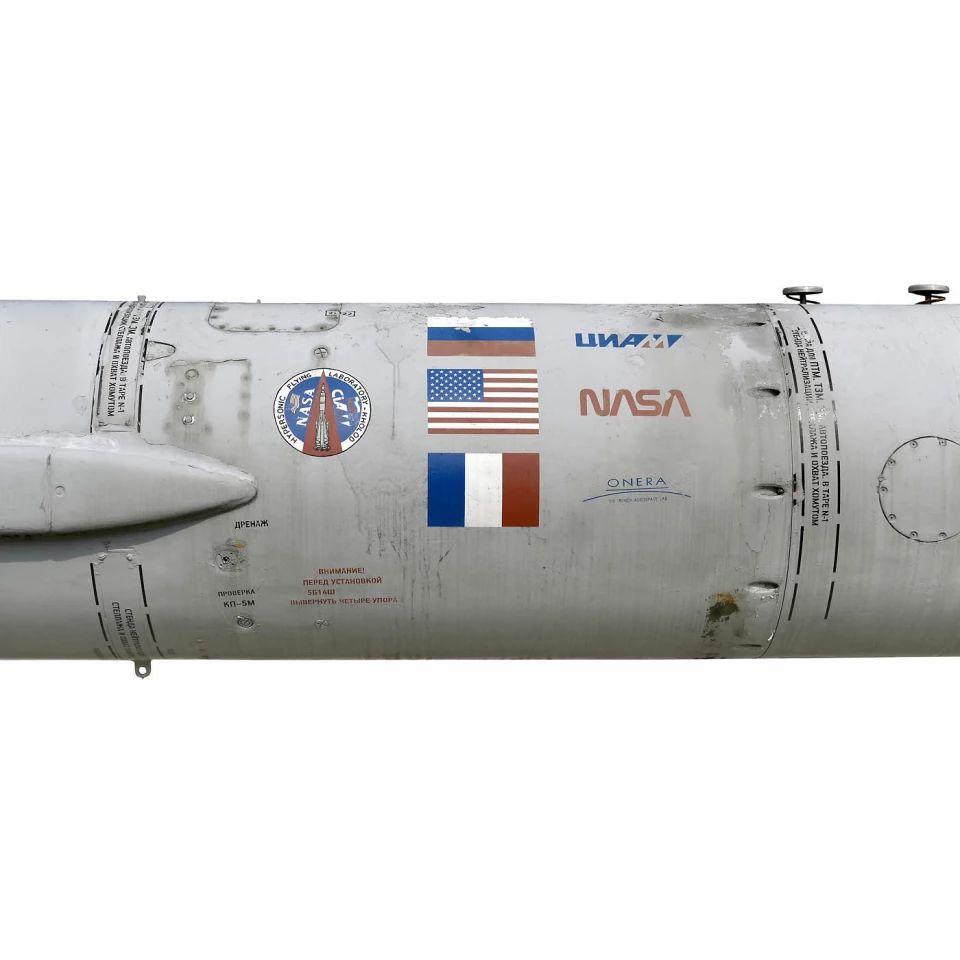If you were yearning to own a hypersonic missile, you've just missed your chance. In a live online sale on November 6, Auction Team Breker offered one of the four remaining CIAM-NASA Hypersonic Flying Laboratory (HFL) "Kholod" hypersonic test bed missiles, which sold to an undisclosed European company for €27,700 (US$32,100).
When the Soviet Union collapsed in 1991, it left behind a raft of engineering projects that faced cancellation with the end of the Cold War. One of these was the Kholod hypersonic missile, known in the West as the HFL. The goal was to develop a scramjet capable of powering a missile at over five times the speed of sound.
Developed by the Soviet Central Institute of Aviation Motors (CIAM) beginning in the 1970s, the missile first flew on November 27, 1991 from the eSary Shagan test range in Kazakhstan. Less than a month later the USSR was dissolved.
That should have been the end of the story, but both the French and the Americans were keen to learn about what the Russians had discovered about hypersonics and scramjet design. The Americans eventually had another motive, which was a policy of helping unemployed Russian aerospace engineers find work at home so they wouldn't be tempted to go job hunting abroad and possibly lend their expertise to rogue states.

The result of this was an early collaboration between France and Russia on continuing the project, with NASA joining in 1994 and contributing expertise and funds to the budget, which reached US$95 million by 1998.
Named after the Russian word for "cold", the Kholod missile was designed around a scramjet, which is a jet engine similar to a ramjet and has very few, if any, moving parts. In both a scramjet and a ramjet, the air is compressed by the forward motion of the vehicle rather than by turbines. The difference between the two is that the ramjet has to decelerate the incoming air to subsonic speeds before combustion, while the scramjet can handle supersonic air.

Because the scramjet has to be moving fast in order to work, the Kholod was designed to be about the size of a military warhead and was mounted on the nose a an SA-5 anti-aircraft rocket with four solid rocket boosters. This would accelerate Kholod to a speed of Mach 3 and an altitude of 20 km (12 miles).
Once at speed, the solid boosters would separate while the scramjet fired, still attached to the SA-5 first stage, which climbed to an altitude of 35 km (22 miles) and a top speed of Mach 6.47. To protect against the massive heat generated, the scramjet was cooled by circulating the 17 kg (35 lb) of cryogenic liquid hydrogen fuel around it before squirting it into the combustion chamber.
The missile was unguided, though it did carry an array of telemetry instruments. When the fuel was exhausted, the craft would simply crash into the desert floor. In all, nine Kholods were built with five destroyed in flight. The one offered for auction was a static ground test vehicle that was used to study the aerodynamics of the vehicle and how the gases flowed through the scramjet in a special wind tunnel.
The sale price of €27,700 (US$32,100) to an undisclosed European company is only €5,000 (US$5,800) more than the €22,000 (US$25,500) starting price and well short of the pre-auction estimate of €40,000 (US$46,350) to €70,000 (US$81,100).
Source: Auction Team Breker











